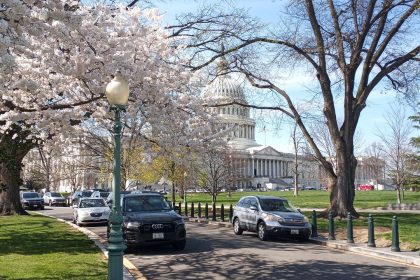Broadband Deployment Needs Flexibility, Not More Federal Red Tape

A small community in Lincoln County, Maine, was recently denied a broadband deployment grant by the U.S. Department of Agriculture, as satellite service provider ViaSat had already won the area in a Rural Digital Opportunity Fund auction by the Federal Communications Commission, recalled Peggy Schaffer, executive director of the ConnectMaine Authority, Wednesday.
Shaffer pointed to this as an example of how federal funding actually “[blocked the] effort” that the poor, rural community had been putting forth “for three years to bring affordable [broadband] service for everyone,” during the House Committee on Small Business Subcommittee on Underserved, Agricultural, and Rural Development hearing entitled, “Supporting Small Entities through Investments in the National Infrastructure: Broadband.”
This was just one example of how federal red tape could create hurdles to broadband in underserved areas, particularly small towns and rural communities. Schaffer also pointed to four projects in 2020 that received grants for the USDA’s Rural Development Broadband ReConnect Program in Maine. These smaller projects should take six to eight months to build, but she said they have been caught up in such USDA “bureaucracy” that they have not even broken ground.
“If these projects would have been funded as a state grant, they would’ve been lit and serving people right now,” Schaffer charged, saying “projects all across the country are having similar, unneeded delays.”
“The process of the USDA does not really work for small towns,” she said, adding that it does not work for municipal networks either. The “one size fits all” program does not take into account whether you’re building a $20 million network or a $1 million network.
“Broadband infrastructure is a road-by-road battle. Where you live matters. A neighbor half a mile from you might have good service, but bringing that same service to you right down the road might cost you $30,000 or more,” she said.
A scoring process through state-led grants as opposed to federal programs, she explained, would give “extra points” to applications looking to serve “people who have worse service than others.” She explained there needs to be a “capital stack” of federal, state, local and ISP funds to “get rural America” served with high-speed broadband. President Joe Biden’s American Rescue Plan’s Capital Projects fund recognizes that, she added, by putting “the funds closest to community efforts through a state program.”
“There is no one model because there is no one solution. It requires a flexible strategy, and flexible strategies are just not what the federal government does well,” she continued, noting that federal funds need to “flow” through state programs that know what their communities need and can “craft solutions that fit” them.
Dan Sullivan, president of Downeast Broadband Utility, agreed with Schaffer in that federal programs “are quite onerous and time consuming,” but, as the first and only municipal network for Maine, Sullivan´s DBU experience produces a different perspective on private partnerships.\
DBU actually grew out of exasperation with ISPs and the “terrible, expensive broadband options” in its communities. Before the two towns in Maine, Calais and Baileyville, came together to create the municipal network in 2018, they had unsuccessfully reached out to ISPs, with the towns offering to help them fund the fiber-to-home deployment. DBU then created its own fiber network, now serving 99% of both towns, paid for by local subscribers and not by “taxes raised”, much like any utility. Neighboring communities like Alexander, Princeton, Cooper and Indian Township Reservation will be joining DBU as well.
Upending the ISPs argument that it is not affordable to deploy to low-density populations, Sullivan said the towns not only paid for the construction of their network but the maintenance and operating costs as well – and the network is open to any ISP.
A number of providers that have received federal and state subsidies, he claimed, have not actually “improved [broadband]” service to a “future-proof” level with fiber, but are instead deploying solutions like copper cable or wireless that keep their costs low. In his opinion, any public dollars given to these partnerships should require minimum set standards of providing high-speed fiber connection that can be easily upgraded to meet the speed and traffic demands of the future.
By DBU having this “single, dedicated” fiber going to each home or business ensures a “future-proof” solution, as the fiber optic cable is viable for more than 100 years. Only the “laser equipment in our communication cabinets” on the telephone poles would have to be upgraded as technology improves.
“In contrast, cell towers [for wireless] need to be climbed and satellites relaunched to keep up with changes in technology,” Sullivan explained. If fiber were installed in each telephone pole in the U.S., he added, “ubiquitous coverage” would reach all farms and deep forests.
“The backbone of the internet is fiber, the middle mile is fiber. It has only been the last mile to the business and to the consumer that has been relegated to copper, or even worse, to wireless,” he claimed, as even “cell towers always go back to fiber.”
“In the poorest county in the state of Maine, we have the fastest internet in the world at the most reliable cost,” Sullivan said.























